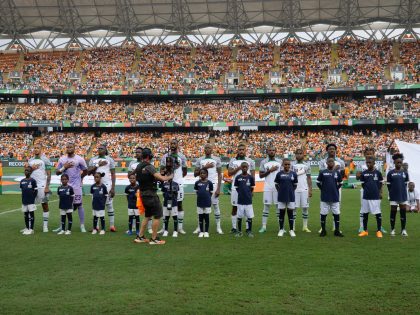How the Dutch government polices unwanted black bodies
Often championed as a human rights defender, the Netherlands continuously fails miserably in politically protecting and socially including refugees.

Karen Elliot, via Flickr CC.
An estimated 1,700 refugees have died this year in the Mediterranean trying to reach Western Europe. One of the consequences of the increased media attention, is that shifted focus onto the immigration regimes of European countries. Take the Dutch for example: While activists, critics and the European Committee of Social Rights (ECSR) criticize the Netherlands’ asylum laws, most Dutch people don’t care about this xenophobic apparatus. The regime ignores European guidelines with regards to medical assistance, shelter and detention plus it lends its signature to violent deportations executed by KLM, the country’s state airline. So why aren’t refugees included in the national narratives about institutionalized wars against The Other?
Often championed as a human rights defender, the Netherlands continuously fails miserably in politically protecting and socially including refugees. The Universal Convention of Human Rights states, undocumented people are entitled to the basic right to protection. Amnesty International, Kerk in Actie (Church in Action) and The Netherlands Institute for Human Rights spoke out against the unsafe living conditions many undocumented people face. On April 22, 2015 the Dutch government agreed on a shelter program for those whose asylum applications were denied. Philip Alston, the UN’s special reporter on human rights, condemned the agreement and labelled it “an infringement of human rights.” The deal also confirmed that Dutch politicians fail to acknowledge that many governments refuse to “take back” those who escaped their regimes. Against EU-regulations, the Dutch government only wanted to offer shelter to those who’re “willing” to return. Those who “refuse” are portrayed as disobedient exploiters of white citizen’s tax money.
Throughout the Netherlands, undocumented people live in precarious conditions with little, if any support to deal with the posttraumatic stress and trauma that many endure. Debates on migration should consider the socio-political and economic dimension of forced migration, but propaganda trumps facts and figures. Most Dutch politicians rebuke the idea that Europe’s colonialism, imperialism and all other exploitive greeds that spring from that are connected to the current streams of forced migration. We must continue to ask ourselves why people are moving and why some bodies are allowed to pass borders and others are not. Borders, visible and invisible, remain a fundamental issue within fort Europe and continue to dehumanise Black bodies.
The Dutch media is king in villainizing undocumented people as invaders of supposed neutral or safe but always white spaces. Newspapers portray images of people abusing the safe haven of tolerance. Such sentiments were exhaustedly expressed by Dutch folk in response to the fatal Mediterranean shipwreck. Without reiterating the recent racist responses of the Dutch to Black bodies dying at the hands of white supremacy here, let us question why we are not looking at the role of the Dutch government who continuously keeps institutionalised racism in check. There is a privileged obliviousness about the humanity of thousands of people who’re living on the streets, in squatted buildings or in isolated centers where their assumed mobility depends on the villagers’Afrophobia.
In October 2014, 1400 men, women and children who’d apply for asylum would be placed in a town called Oranje. Named after the color that, at least in the Netherlands, is synonymous for all things Dutch, the small and rather isolated village has approximately 140 residents. Oranje’s stance on opening the village doors to Black people reminds us of Orania, the South-African white-only town in Northern Cape. They are, indeed, namesakes.
The group was said to consist of Syrian families but 200 of them were… Eritrean men. Most of those whose mere existence broke the colonial rules of being Black in a white space, were escorted out of town. Even more problematic than their exodus, is the hardships of the East African* people who stayed or arrived after they were gone. When this happened and as it continues to happen throughout the country, there is little attention paid to the government structures policing unwanted bodies.
Oranje and its villagers are no exception to the nation’s ideas about the humanity and mobility of the Black, undocumented Other. In the wake of unceasing State violence, undocumented people rise up against the supposed beacon of liberalism, tolerance and whiteness that is the Netherlands.
*Check the hashtag #UndocumentedNL on Twitter to read more updates from and about the undocumented members of NL-based communities. Salute to our Comrade Nasir for translating and helping us contextualize our intuition. To protect the people’s privacy and not negatively affect their current asylum procedures, we chose not to mention their names and/or specify their countries of origin.



















